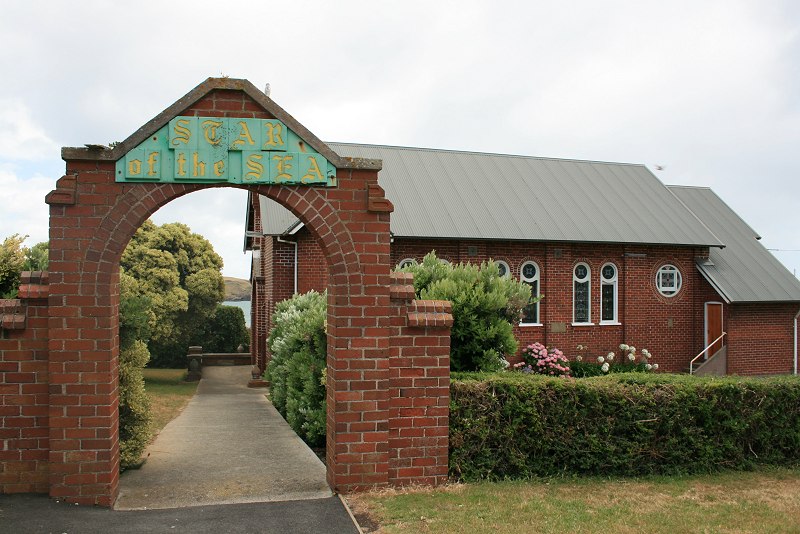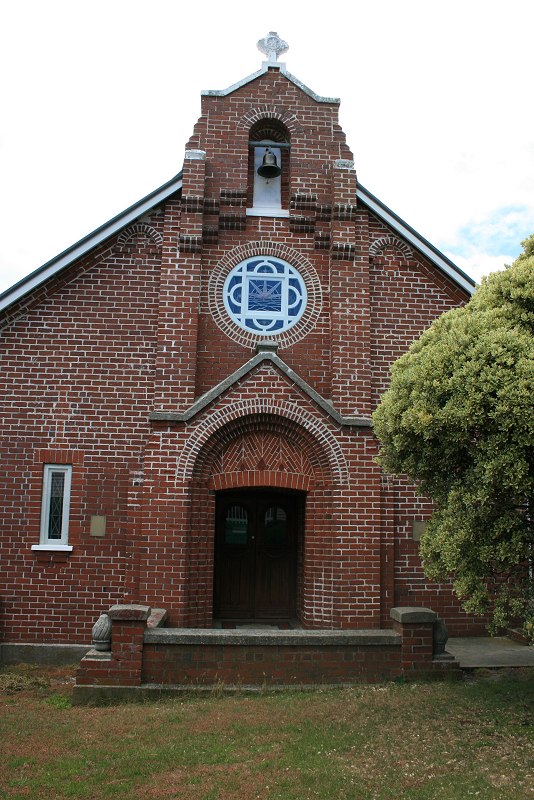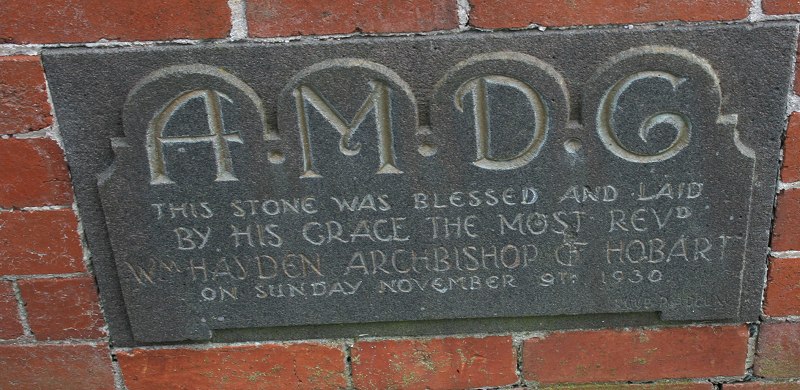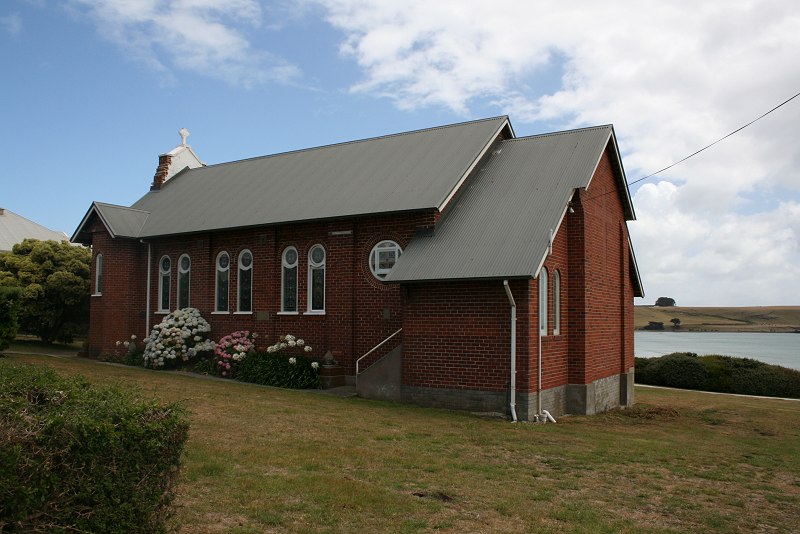
Marshall St Stanley. Google Maps
Opened 1931, replacing an older building on the same site.

STANLEY.
Roman Catholic Church:
The work of demolishing the Church of Our Lady Star of the Sea was started on Monday, to make room for the proposed new church of the same name. Ono of the chief faults in the old church, which was built 32 years ago, is that the walls were solid, no cavity being left to prevent moisture coming through, and they there fore leak. The new building, of which Mr. H. S. East, of Launceston, is the architect, is to be Romanesque in design. The contractor is Mr. K. Howe, of Launceston. The building will be about 20 feet longer than the old one, the addition comprising the Sanctuary and Sacristies. The seating accommodation will also be slightly more than in the old building. It is expected that the new church will be finished before Christmas, and in the meantime divine service will be conducted in the large dining-room of the Presbytery, which has been set up as a chapel.
Advocate, 8 October 1930

“This stone was blessed and laid
By his Grace the Most Revd
Hayden Archbishop of Hobart
On Sunday November 9th 1930”
The New Church.
The foundation stone of the new church of Our Lady, Star of the Sea, was laid on Sunday morning after 11 o’clock mass by Archbishop Hayden. There was a large attendance. His Grace was welcomed to Stanley by the Rev. P. Adlum, B.A., the Warden (Cr. Dan Brown), Mr. Fergus Medwin, M.H.A., and Mr. W. McKenna of Irishtown. He congratulated the people on their pluck and their happy financial position, and hoped to be present at the opening of the church. Father Adlum reported that the cost would be £1883 4s, of which £1148 13s 1d was in hand, leaving a balance of £734 2s 11d, of which £146 18s 6d was donated after the ceremony. Mr. W. O’Neill returned thanks to the donors.
Circular Head Chronicle, 12 November 1930

New Roman Catholic Church:
The new Roman Catholic Church of Our Lady Star of the Sea at Stan ley is nearing completion, and it will be one of the best designed and appointed churches in the State. The architect is Mr. H. S. East, and the contractor Mr. K W. Howe, both of Launceston, and the contract price, exclusive of fittings, was £1780. To Messrs. W. Coogan and Co., Launceston, was entrusted the making of the high altar, the two side altars, linen press, vestments press, and altar rails, all of Tasmanian blackwood, the whole being designed by Mr. East. The high altar is at present on view in the show room of Messrs. Coogan in Brisbane street, and speaking of it at the weekend Mr. East said he was more than pleased with the workmanship which the firm had put into their contract. In his experience he had seldom seen bet ter work of the kind in any part of Europe, and it was a fine advertisement for Launceston that such high class workmanship could be executed there. The design of the altar is free Gothic, and it has a burnished gold dome over the tabernacle and two candelabra in a semi-circular arch framing the altar. These are reminiscent of the magnificent candelabra and the Capella Palatina at Palermo, Sicily. Splendidly grained blackwood has been used, and the effect is most beautiful, The church, which has been construct ed of brick, has seating accommodation for 125 persons, and it is stated that its furnishings will be the best of any Roman Catholic church in the country districts of the State.
Advocate, 22 December 1930
STANLEY.
Roman Catholic Church:
The work of rebuilding the Church of Our Lady Star of the Sea has been completed. It is now a very fine building, and an ornament to the town. The opening ceremony is to be at the eleven o’clock Mass on Sunday next, and in the absence of the Archbishop in Rome, will be carried out by Very Rev. Father Murphy, Vicar Capitular. The church has been remodelled in the Romanesque style, and sanctuary and sacristies added.
Advocate, 12 March 1931

A FINE BUILDING.
New R.C. Church at Stanley
CONSECRATION CEREMONY.
The Star of the Sea Church at Stanley, which during the past few months has been rebuilt, was opened on Sunday, when the seating accommodation was taxed to its utmost, the congregation including many adherents of other churches and visitors from Hobart, Launceston and practically all parts of the parish. The outward appearance of the building was highly commented upon, but the beauty of the interior eclipsed all expectations, and Father P. Adlum and his parishioners were congratulated on the results of their efforts.
[continued]
Advocate, 17 March 1931





